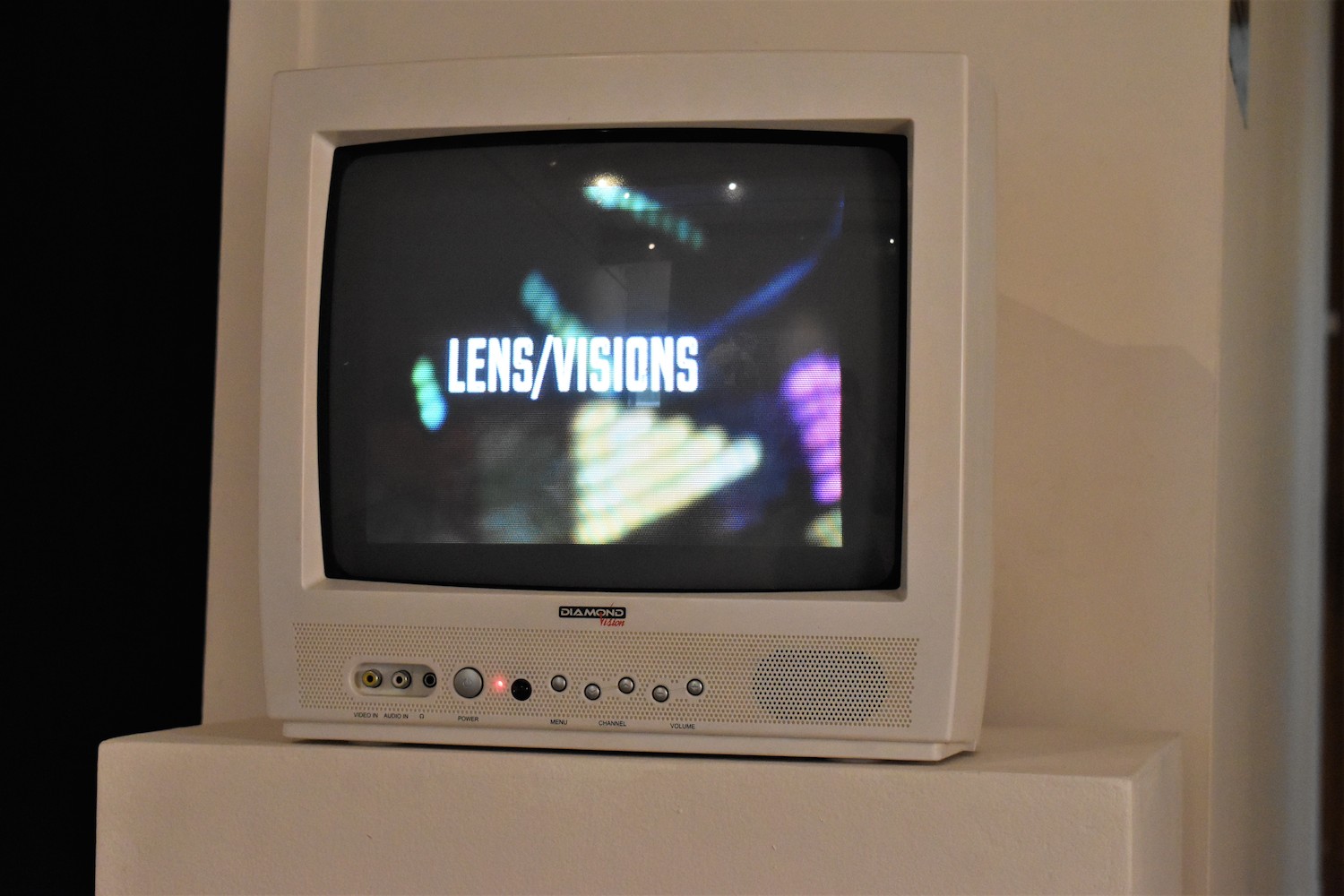
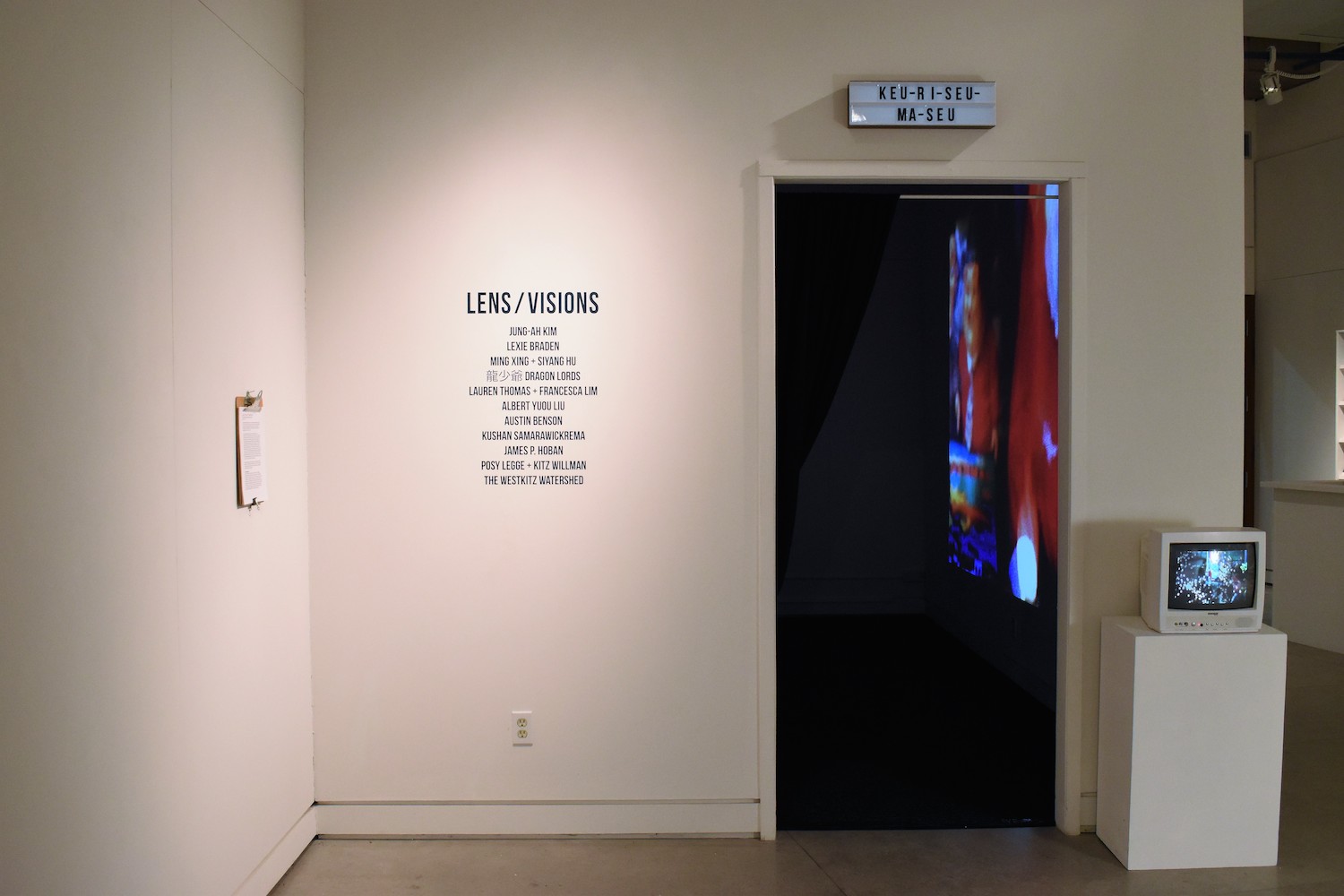
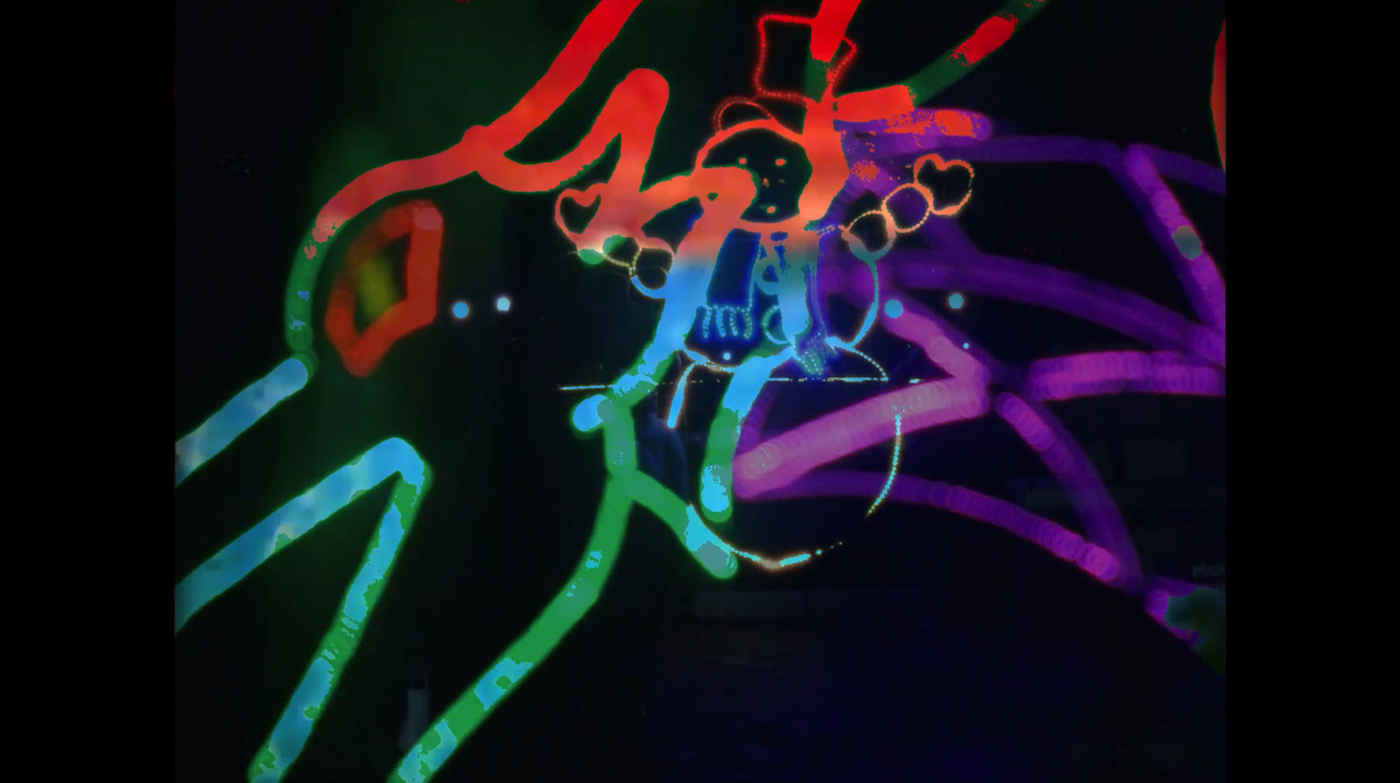
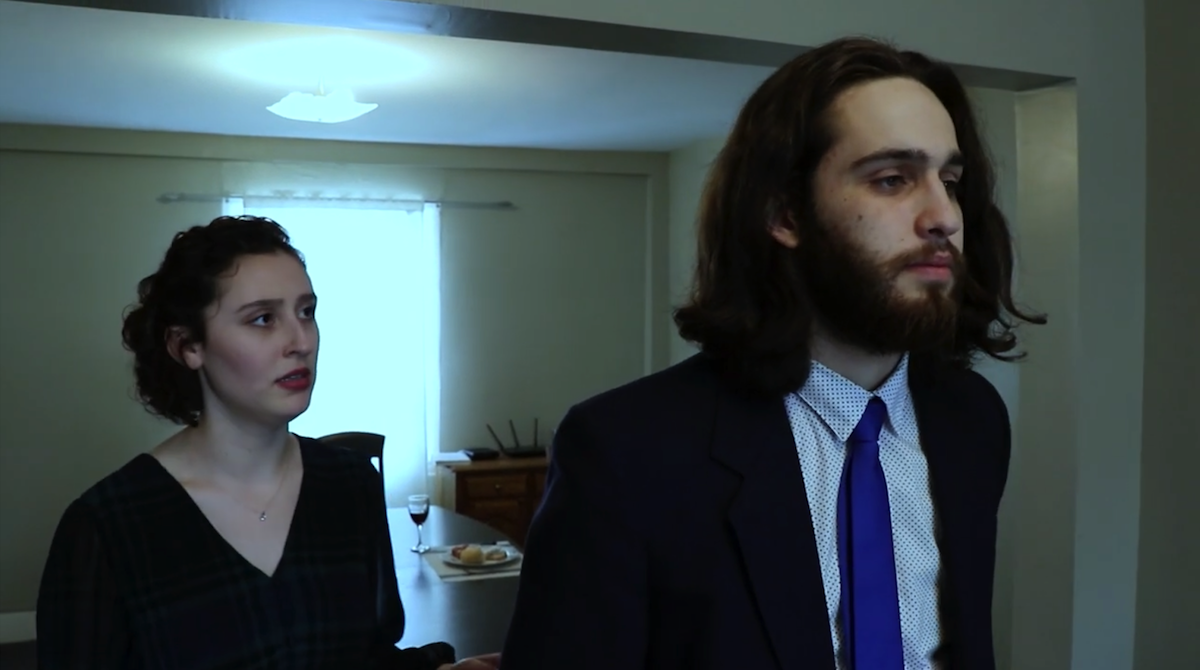
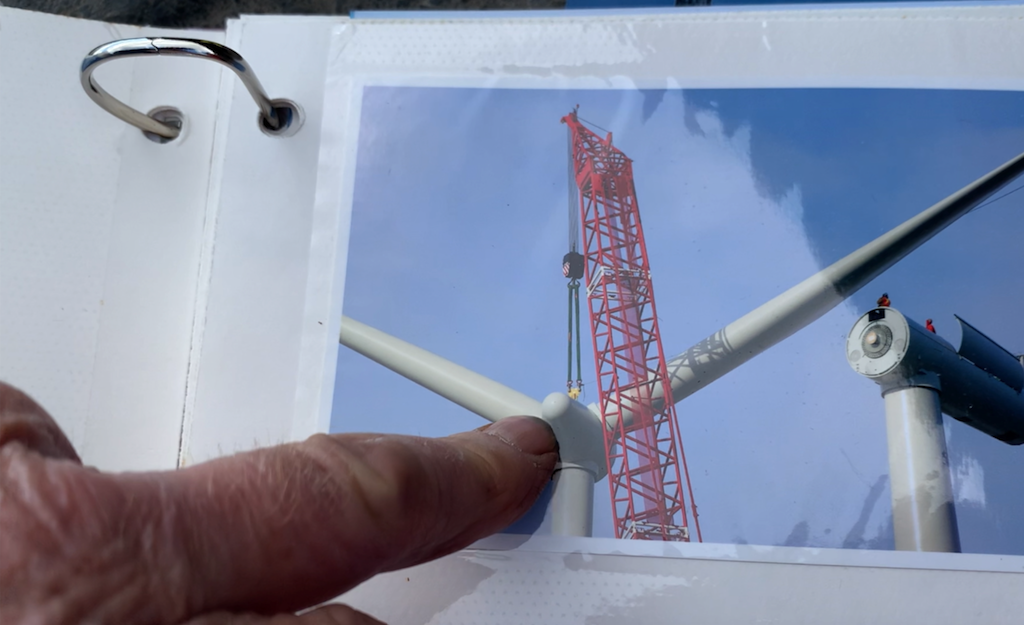
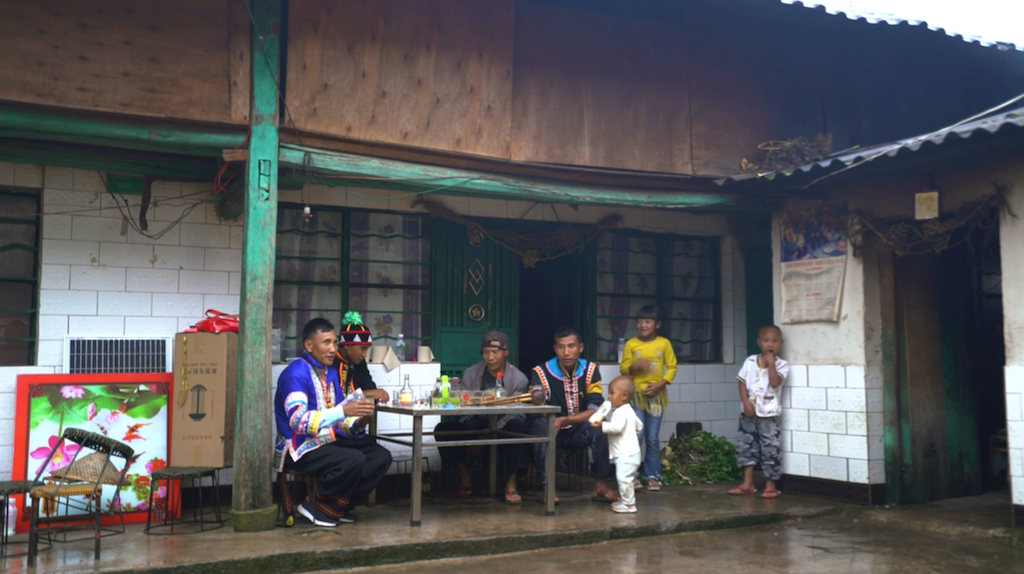
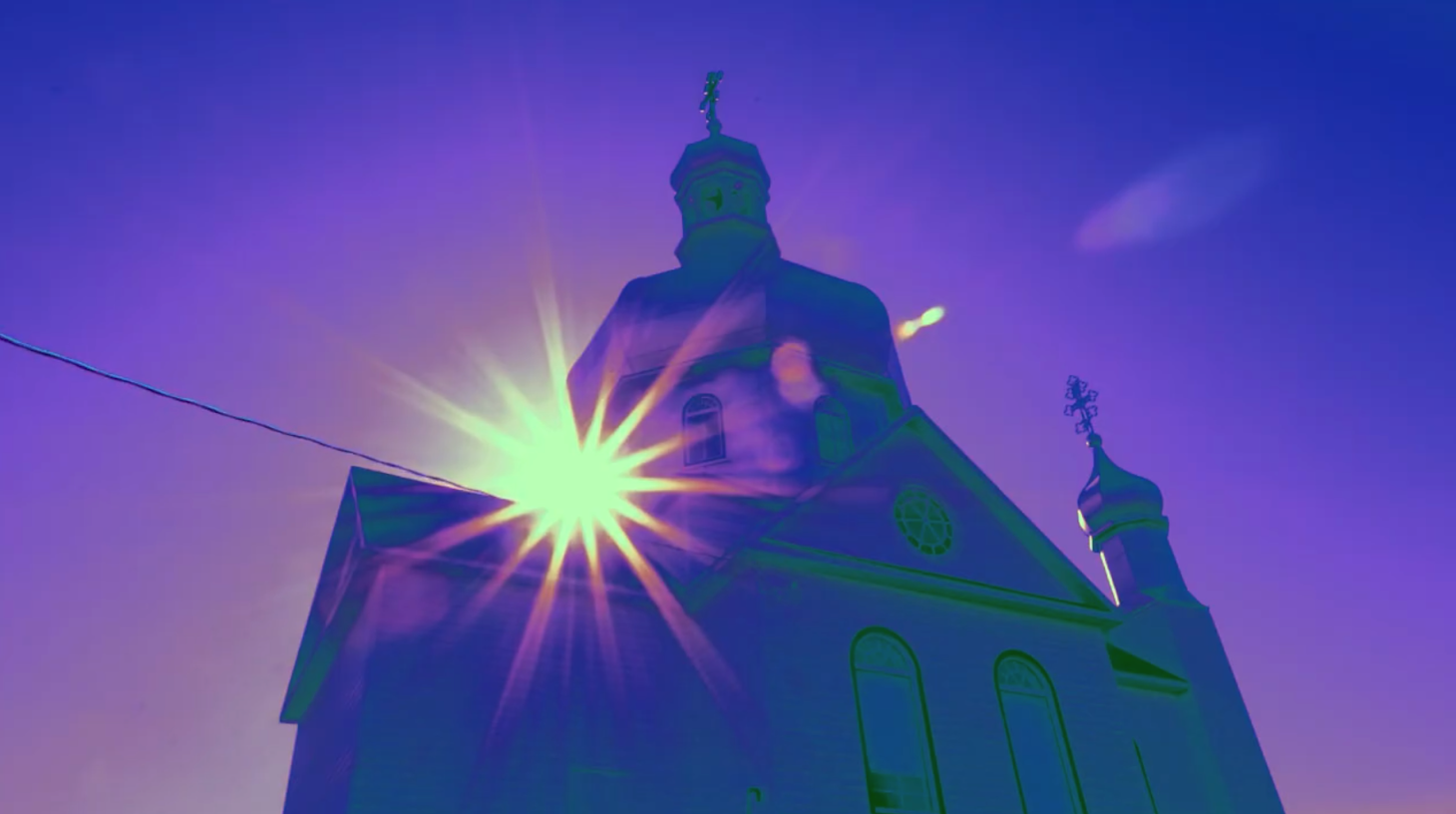
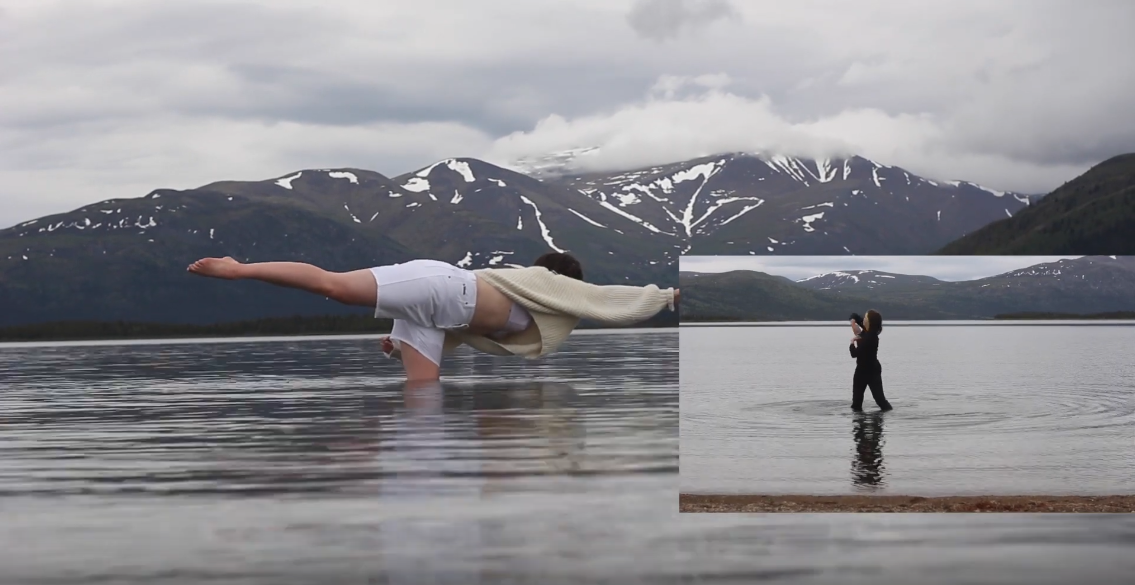
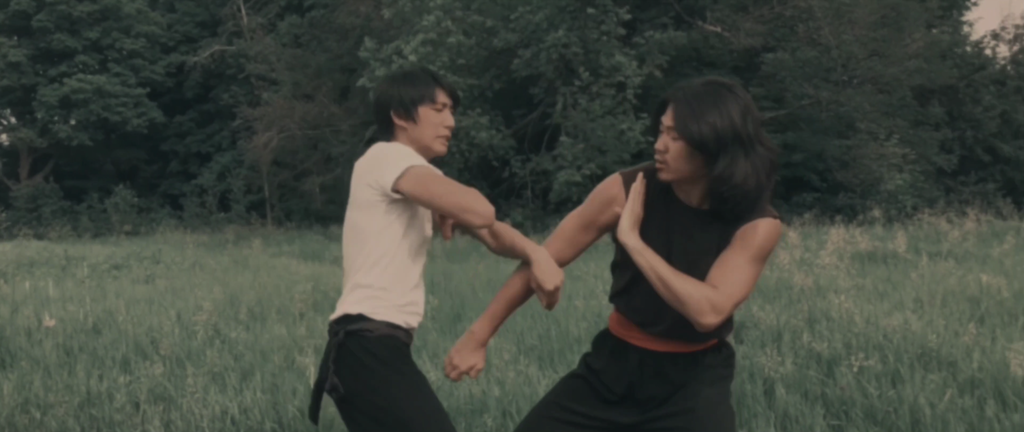
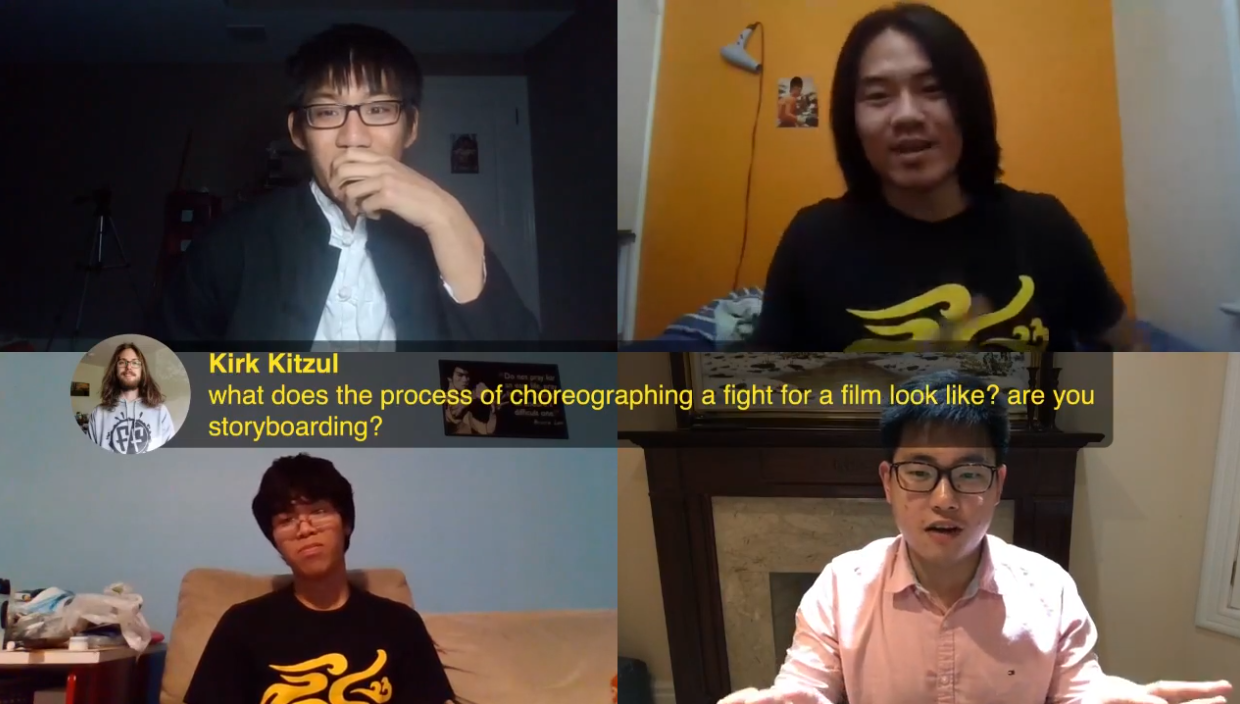
Austin Benson, Lexie Braden, 龍少爺 Dragon Lords, James P. Hoban, Jung-Ah Kim, Posy Legge and Kitz Willman, Kushan Samarawickrema, Lauren Thomas and Francesca Lim, The Westkitz Watershed, Albert Yuou Liu, Ming Xing and Siyang Hu
Project Room
November 24 – December 18, 2020
Curated by Roy Zheng
Short films are democratic;
Short films are unique, insightful and intuitive;
We make short films to celebrate our passions for life,
to confront the problems that we all live with,
to empower ignored and marginalized voices,
to display our creativities, knowledges and critical visions.
Film presents unique possibilities to document and expand our vision and imagination. It transports our awareness to other places, times and positionalities. Filmmaking has always been expansive and challenging, yet often monopolized by major Hollywood studios. Thanks to the advancement of digital technologies now at our fingertips, we are capable of creating visual and distributable content as a kind of second-hand cinema, as a means to creatively structure our narratives and accent our perspectives. Lens/Visions is a platform, a portal, a point of entry. Please enjoy the show.
Lens/Visions features eleven short films and video projects by Queen's students, recent grads and collaborators. Each story re-examine pasts, presents and futures through broad and ranging narratives of nostalgia, environmentalism, mental health, conflicting and nourishing relationships, and apocalyptic realities. Film styles and approaches include short-docs, poetic renderings and experimental production.
Exhibition Text
The style of Squander is partly an ode to the classical German Expressionism movement of the 1920s. As a film, it aims to reflect tropes of the genre, as well as being improvised on the basis of precarious work (no-budget make-do attitude). As with my previous work, in particular, Opprobrium screened at Kingston Canadian Film Festival in 2018, the focus of the film is mental illness, depicted through figurative language and horror themes.
Austin Benson is an emerging writer and filmmaker based out of Brockville, Ontario. He attended Queen’s University for both his undergraduate degree (Film & Media BAH), and MA (Screen Cultures & Curatorial Studies). To-date, his creative pursuit accomplishments have included the publication of short stories and screening of short films in exhibitions and festivals.
Fen and Moor is one of four films from a series of on-site movement explorations I filmed this summer. The other videos in the series are Collect and Combine, Airing, and Soak, Conjoin. These films were all created by first finding a location, and then I left dancers to improvise with a few prompts. I determined this particular location for Fen and Moor a few days prior to filming and really wanted to see someone fully immerse themselves in the mud. Imitation or exploration to connect with the surrounding environment was the main idea behind the film and I love the childlike inquiry and play seen especially around the one-minute mark in the field of marsh fleawarts. My dancer, Sadie Segriff, was surprisingly onboard even though we had rain while shooting and went along with sitting in a fairly foul swamp for an hour.
Lexie Braden is an artist currently based out of Dawson City, Yukon traditional territory of the Tr’ondek Hwech’in First Nation. Her work is shaped by human and location-based relationships and connections. In 2020, Lexie was Tombstone Territorial Park’s on-site artist-in-residence for two weeks which resulted in a final exhibition. During the residency, she led demonstrations, produced short films, created prints and graphite drawings. In 2019, Lexie’s film Feelers was exhibited in the group show Temporal Encounters at the Union Gallery. She has also created and illustrated a children’s activity booklet for Tombstone. Lexie is enrolled in the Queen’s University Fine Arts with Honours graduating Class of 2021.
Deadly Shapes of Shaolin is a tribute, an homage to all the old school martial arts films made in Hong Kong in the 1970s and 1980s. During the quarantine, we watched a LOT of Kung Fu movies from that era, and in turn, got really inspired and hyped up to create one of our own in that exact style. Old school Kung Fu films tend to have a lot of wide-angle shots and not a lot of camera movement. Shots were held very still and for long periods of time long so that movements can be seen clearly by the audience. We paid focused attention to these details in order to produce a faithful recreation, and it certainly was not easy making a fight scene that way. Most of our shots usually had between 8 to 20 movements and if we messed up even one we had to redo it from the beginning (the most takes we did on this project was 33 for one shot). We believe that modern-day action sequences in films are too reliant on technology and fancy camerawork to disguise their lack of effort (and perhaps skill of the actors). That is why we love and respect the old school way. When you can see the movements and fighting clearly, that is when you know that you are watching real Kung Fu. Film fighting, if done right, is poetry in motion.
龍少爺 Dragon Lords is a martial arts and filmmaking team dedicated to keeping the spirit of Kung Fu alive as well as producing quality martial arts content. The team is formed not out of commitment nor duty, but out of our love for martial arts as well as Kung Fu movies. We were all heavily influenced by martial arts films growing up and we looked up to stars like Bruce Lee and Jackie Chan as our heroes and role models. During the summer of 2019, we came together and decided to create a fight scene, Battle of the Masters, which ultimately led to the creation of the team. Today, we are still out there, active as ever, doing our best to continue to create bigger and better fight scenes and short films following in the footsteps of those that came before us.
A couple sit down for dinner. Dinner is a long-shot short film with no cuts. Every piece of audio was placed in post-production.
James P. Hoban is a filmmaker and actor based in Kingston, Ontario. He is completing his fifth and final year at Queen’s University, majoring in Film and Media. Currently, James is working on establishing a small Kingston-based videography/filmmaking company called Sneezing Dog Productions, before setting his sights on Toronto and further pursuing a professional practice within the Canadian Film Industry. He loves seeing people’s stories come to life and helping them do so.
Keu-ri-seu-ma-seu is a film that explores the Christmas tradition and celebration in the U.S from my personal perspective. At the time of filming, I had lived in the U.S. for a little less than two years, and I was having a conflicted relationship with myself as a foreigner and an outsider. Apart from being happy from being exposed to new experiences and learning new things, I was also experiencing homesickness and feeling disconnected as I tried harder to fit in. This feeling was the most distinct for me around the time of Christmas, as it is the biggest holiday in the U.S. where everyone is having a great time with their family and friends. This made me want to make my own “home video” questioning my own “home.” Keu-ri-seu-ma-seu was shot on 16mm film to evoke sentiments of nostalgia and warmth, with visual and sonic manipulations to express a disorienting experience. The short film can ultimately be understood as my own Christmas carol/video as an international student and it was made for those who are in a similar boat as me.
Jung-Ah Kim is a filmmaker/researcher from Seoul, South Korea. Her filmmaking practice involves her attempt to creatively process and express her personal questions and confusion as she navigates her surroundings. She likes to experiment with different mediums and hybridize them while exploring the tension between social expectation and alienation in today’s digital culture and urban life. She received her MFA in Documentary Media from Northwestern University (2019) and now in the first year of her PhD in Screen Cultures and Curatorial Studies at Queen’s University. During her time in Chicago after earning her MFA, she worked as a programmer for film festivals and organized Korean film screenings at a local microcinema.
Spurs on in the Insinger Church is a one-off experimental film by Posy Legge and Kitz Willman that depicts a Ukrainian church in Insinger, Saskatchewan. Kitz Willman created the score for the film.
Posy Legge and Kitz Willman are frequent collaborators currently residing in Winnipeg, Manitoba, Treaty One Territory. In their collaborations, Legge is often behind the camera with Willman as her subject. The majority of their output takes shape as music videos.
Lockdown Paradox is a film I created during a time of intense restriction due to the COVID-19 pandemic. The City of Vancouver, in the span of months, morphed from an energetic city to a hollowed metropolis. The people walked slower, the restaurants were empty, even the sky seemed greyer and more miserable. Paradoxically, during this point in time I felt emancipated as a filmmaker. Lockdown meant no shouts from pedestrians that I was blocking their way. It meant that filming in or near private property would no longer incur the wrath of bored security guards. The norms for me as a filmmaker had changed. This however wasn’t the only catalyst for this short film, though it was one of the major factors. Another spark of inspiration came from an article I read which highlighted the fact that people with OCD and anxiety felt a relief of social pressure that commonly cohabits and is the source of contention within their minds. Conditional behaviours surrounding social distancing, handwashing, among other things had become normalized by the pandemic. My studies in psychology influenced my ability to create the main character John. I tried to make a “day-in-the-life” film which explores John’s transition from his comfortable home life to the uncomfortable outside world. In this film, John’s character provides a journal-like commentary on the irrationality of society in wake of changing norms. His ostracization creates a spitefulness that underlies his monotone delivery, as highlighted by how he interacts with the outside world.
Kushan Samarawickrema is a recent graduate of Queen’s University, with a degree in Biology/Psychology. He has always been interested in movies, but two years ago is when his passion for film really exploded. It all started when Kushan and his friends started going to the Screening Room in downtown Kingston every week and were inspired by films such as Roma, Call Me by Your Name, Parasite, among others. This sparked Kushan’s studies of filmography, script writing and finally, film production. He describes himself as more thirsty than ever for the art of filmmaking.
The Wolfe Island Windmills is a short documentary-style video produced by Lauren Thomas and Francesca Lim in the span of one intense week of filming, editing, illustrating (and school work!), for this year’s annual Queen’s Journal Climate Issue. The film inspired the front page of the publication, Volume 148, Issue 7. Lauren’s extended family has lived on Wolfe Island for many generations—her Uncle Grant was born on the island in 1941. She grew up visiting her family (aka the Pyke cousins) on Wolfe Island, listening to and learning from their fascinating stories and shared knowledge. She distinctly remembers Thanksgiving 2008 when her family witnessed the first windmills being installed on the island, in absolute awe. Lauren was inspired to tell the story of the Wolfe Island windmills because she has often found herself explaining to non-islander friends how massive the distant blades truly are, and her cousins’ experience hosting a few on their property. The Wolfe Island Windmills documents Grant Pyke’s perspective on the windmills, including informative personal research and thoughtful opinions. Much like all of Lauren’s elders, Grant is a Canadian gem known for his exceptional hospitality, passion for learning and farming, as well as his love for life, family, animals, and community. Lauren and Francesca have enjoyed reading the community’s positive responses to The Wolfe Island Windmills and are currently busy making more weekly Queen’s Journal videos, aiming to capture more brilliantly charming and honest local stories.
Lauren Thomas and Francesca Lim are third year Film and Media students at Queen’s University and the Queen's Journal, video staff for the publication’s 148th Volume. Lauren is the Video Editor and Francesca is the Assistant Video Editor. Having met last year in class at the Isabel Bader Centre for the Performing Arts and becoming fast friends, they now work together to produce weekly journalistic videos as well as two podcast series for Queen's Journal. They are both eager to create projects and enjoy the adventures of filmmaking—striving to improve their production skills and storytelling abilities with each weekly video project.
goalie gets a mask/cigarette strings is a visual for the final track on The Westkitz Watershed’s debut album Lamb on a Leash. The piece features footage of Devin West deinstalling their 2019 Union Gallery exhibition Queer Portraits of Invisible Grief. The deinstallation imagery is coupled with footage of Lake Ontario from the Wolfe Island Ferry and documentary film of the prairies. Psychedelic visuals layer long-shots of West’s artworks. Barbed wire, teeth, bullets, and bone. The song is a conversation about safety, home, and kin. The track opens with play-by-play announcers detailing a burgeoning fight between two NHL goalies. This introduction gives way to a wash of synths, drums, and saxophone. Kitz Willman delivers a meditation on his experience as a childhood goalie and the dichotomy of on- and off-ice protection. In the second-half, West recalls seeing a bird’s nest crafted with the red strings that were once used to bind packs of cigarettes. The sculpture referenced in the film acts as a mnemonic device within a poem that reads like a eulogy, grieving for a queer ancestor. The piece ends with a field recording of West and Willman bullshitting and eating chips.
The Westkitz Watershed is a musical duo featuring Devin West and Kitz Willman. Their debut project, Lamb on a Leash (2020, independent), combines spoken word with experimental production ranging from jazz to drone to hip-hop. Field recordings, skittering drums, and improvised saxophone flesh out an intimate backdrop for West’s poetry, tending to topics such as prairie youth, rural queerness, trapline feminism, and kinship.
Second Chance and Second Chance Alternative Ending are two short films that explore existential ponderings that vary between the perspective of viewers—whether you view the films through the vantage point of the person, the backpack, or perhaps both. The title of Second Chance alludes to the core theme of both films: to give people and objects renewed possibilities. Is the person giving the backpack a second chance to be a backpack, or even something more? Is it the backpack with unknown contents giving the person a second chance at life? Or is it the person and backpack complementing one another? Ultimately both films aim to bring notions of complex relationality to the forefront of our everyday interactions.
Albert Yuou Liu is an alumnus of Queen’s University, Class of 2020, with a Major in Film & Media. He is currently pursuing his Masters of Digital Media at Ryerson University as part of the MDM 8.0 cohort. Albert is a literal one-man team—he scripts, films, acts and video edits all of his short films, with occasional collaborations. He loves making things with his own hands, and the sheer pleasure of the process, itself, knowing that he has made several mini legacies of his own. Albert believes that films and photos are meant to be more than just entertainment—they are meant to be shared and enjoyed, to inspire and provoke deep thoughts.
Lahu in the Clouds is a short film produced in the Nanpo village, located at the China-Myanmar border. It is a poetic documentary centred around the Lahu peoples in Yunnan province of China. With the spread of the global epidemic, Nanpo is like a paradise, quiet and calming. Siyang and Ming decided to start their dissertation in Nanpo to explore and study the Chinese ethnic minority culture of the Lahu peoples. During the span of one week living with Lahu Prince Zhake’s family, they documented original and habitual motions of the Lahu ethnic minority’s daily life. The entire documentary focuses on the visual and auditory senses, emphasizing the relationship between the Lahu peoples and nature (especially tea). This movie also reflects the current living environment of contemporary Chinese ethnic minorities and the integration of tradition and modernity within everyday life. Lahu in the Clouds will take you to Ming’s hometown Yunnan, to the depths of the mountains, to the life of the Lahu, to experience original modes of communication and balance between people and nature.
Ming Xing is a Chinese Film and Media graduate from Queen’s University Class of 2019. Both Ming and Siyang Hu are completing their Film and Television Master’s degree at the University of Bristol in the UK. As a filmmaker who has lived in Asia, North America and Europe, Ming has always had a strong interest in the authentic Indigenous cultures of each region. Her graduate project Lahu in the Clouds is a tribute to the Indigenous groups in her hometown of Yunnan. Over the past five years of studying and filmmaking, Ming has utilized filmmaking as a tool to explore her personal identity.
Roy Zheng is a filmmaker, videographer and visual artist entering the second year of his Master’s degree in Cultural Studies. Currently, his graduate research explores the social ecology of independently operated film exhibition institutions in Toronto. Roy holds a BA in Film and Media from Queen’s University, having graduated in 2019. He has previously worked as the Production Assistant at Kingston Canadian Film Festival, Media Archivist at Vulnerable Media Lab and Event Assistant at Kingston Film Office. Roy has created visual projects and artwork in multiple cities and countries through his studies at the University of St. Andrews, the University of Havana, the University of Hong Kong and the Bader International Study Center in the UK.
© 2021 Union Gallery | All Rights Reserved